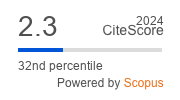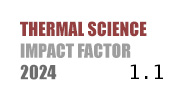THERMAL SCIENCE
International Scientific Journal
Authors of this Paper
External Links
FINE CHARACTERIZATION AND GROUTING SIMULATION OF BOREHOLE FRACTURE DEVELOPMENT IN BURNT ROCK
ABSTRACT
Burnt rock, as a special rock characterized by highly developed internal fractures, provides excellent spatial conditions for the storage of groundwater resources. However, due to the mining disturbance in the working face of the coal seam, the internal fractures of the burnt rock layer will further develop to generate a large number of macroscopic fractures. If these fractures expand to the working face of the coal seam, it will bring safety problems to coal seam mining. Therefore, this study first conducted a detailed identification of borehole fractures in burnt rock, constructed a fracture distribution model, and analyzed the development of fractures in the burnt rock layer. Second, grouting simulations of the burnt rock mass with fractures were performed to examine the stress field distribution of the burnt rock mass under different grouting pressures. It is concluded that for regions with uniformly distributed fractures, a grouting pressure of 2.0 MPa is more effective, while the areas with non-uniformly distributed fractures require a grouting pressure of 2.5 MPa.
KEYWORDS
PAPER SUBMITTED: 2024-10-11
PAPER REVISED: 2024-11-13
PAPER ACCEPTED: 2024-11-28
PUBLISHED ONLINE: 2025-06-01
DOI REFERENCE: https://doi.org/10.2298/TSCI2502231Z
CITATION EXPORT: view in browser or download as text file
2025 Society of Thermal Engineers of Serbia. Published by the Vinča Institute of Nuclear Sciences, National Institute of the Republic of Serbia, Belgrade, Serbia. This article is an open access article distributed under the terms and conditions of the Creative Commons Attribution-NonCommercial-NoDerivs 4.0 International licence

